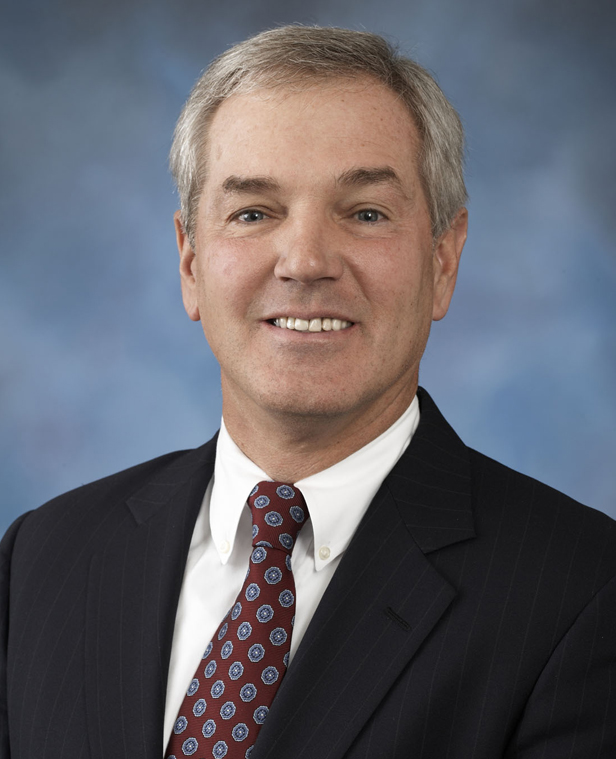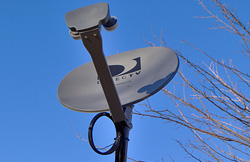Broadcasters Fight SHVERA Modifications
WASHINGTON: The debate about which broadcast signals satellite operators can carry into each designated market area continued this week on Capitol Hill. Broadcasters want to keep a lid on signal importation from outside markets to protect incumbent stations. Satellite operators can import distant signals to households that have no local, over-the-air reception, but they want more flexibility for several reasons, including leverage in retransmission negotiations with broadcasters.
This distant signal issue has been at the heart of each renewal of the Satellite Home Viewer Extension and Reauthorization Act--SHVERA--due again this year.
“If a cable or satellite system serving one community is permitted to import the same programming from distant, out-of-market stations, the viewing audience of the local station will be fragmented--advertising rates will plummet--and the ability of local television stations to provide costly local news, weather, emergency information, and local public affairs programming will, plainly, be diminished,” Paul Karpowicz told the Senate Commerce communications subcommittee during a hearing on Wednesday.
Karpowicz (pictured right) is chairman of the TV board of the National Association of Broadcasters and president of Meredith Broadcasting’s 11-station group. He urged the subcommittee to reject market-modification proposals that would allow DirecTV and Dish Network from importing duplicate, distant signals. He said the DBS operators were already allowed to negotiate with stations directly for carriage of local news and public affairs programming with no change to SHVERA law. Cable operators do so, but DBS operators so far have not, he said.
“Our station in Atlanta has signed an agreement with a cable operator in northwest Georgia to allow it to carry non-duplicating, locally originated programming to Georgia residents in the Chattanooga, Tennessee, market,” Karpowicz testified. “Similar in-state carriage arrangements with local television stations exist across the country. Regrettably, satellite carriers have refused to participate in these carriage arrangements.”
The wholesale importation of distant signals would interfere with contractual agreements between stations and networks, he said.
For satellite operators, adhering entirely to broadcast market boundaries is somewhat complicated. The service is typically distributed via East and West Coast feeds. Current law directs DBS to “carry one, carry all” broadcast signals in a given market, but lawmakers have pushed the industry to carry “local-into-local” signals in all 210 DMAs. Neither DBS operator has completed the task. DirecTV provides local stations in 152 markets; Dish, 182.
The broadcast lobby supports the completion of local-into-local in all markets, but DBS executives say its cost prohibitive. Dish Executive Vice President and General Counsel Stanton Dodge told the subcommittee that the DBS had 29 markets remaining, and it would cost around $35 million to build the infrastructure for delivering local TV signals. Recurring costs would be around $15 million a year.
“Our ability to recoup this substantial investment is constrained by the small size of many of the remaining markets. For instance, there are fewer than four thousand households in the Glendive, Mont. designated market area. This provides very few potential households to subscribe to our service to help defray those costs, yet the costs to provide a local-into-local service are largely fixed,” he said in prepared testimony.
“Launching 29 additional markets would require us to find or create capacity for approximately 100 additional channels on a system that is effectively at, or near, full capacity today.”
Dodge went on to note that in 26 of those 29 markets, at least one of the big four broadcast network affiliates--ABC, NBC, CBS and Fox--is unavailable as a primary fee. He urged lawmakers to allow DBS operators to serve these “short markets” with imported signals.
Karpowicz countered that secondary broadcast digital feeds should instead be carried.
“KBAK-TV, the CBS affiliate in Bakersfield, California, now carries Fox network programming on a multicast channel and presents separately originated local news and other localized program services on that channel as well. With the switch to digital last June, this trend will continue and the number of short markets should be substantially and rapidly reduced,” he testified.
DBS operators also want the right to import distant broadcast signals to households that don’t receive in-market stations over-the-air. The only problem is that the digital transition made obsolete the old analog metric for determining eligible households. Robert Gabrielli, senior vice president of program operations for DirecTV, said that 45 percent of the addresses now ineligible for distant signals can’t receive over-the-air signals, according to an evaluation from TitanTV.
“Consumers prefer local service and the law rightly reflects this. But we cannot yet deliver all of the thousands of local broadcast stations in every market. Where our subscribers cannot receive local service, the law should let us give them distant signals instead,” Gabrielli said.
Until a new digital metric is determined, Karpowicz suggested grandfathering in distant signals allowed by the previous determination.
“In the spirit of compromise, we will not oppose satellite carriers retaining their existing lawful distant signal subscribers who were unable to receive a Grade B analog signal from a local network station--even though those subscribers may now receive a perfectly good digital network signal from that same local network station,” he said. “We also would not oppose allowing satellite carriers to deliver a distant network signal to subscribers in non-local-into-local markets who would qualify under the new digital service standard, but who previously did not qualify to receive a distant analog signal under the Grade B analog standard. In short, in this respect, the satellite carriers will receive the best of both worlds.”
SHVERA has passed through the Senate Judiciary Committee and now awaits Commerce Committee approval. A slightly different version, H.R. 2994, was passed by the House Communications subcommittee in June and also awaits full Commerce Committee approval.
-- Deborah D. McAdams
MoreTVBSHVERA coverage:
July 15, 2009: “Congressman Bows Bill to Import TV Signals”
Arkansas Democrat Mike Ross is pushing legislation to overturn the current rules governing which broadcast signals satellite and cable operators can carry. Ross is member of the House Energy and Commerce Committee, where he intends to refer the so-called “Local Television Freedom Act of 2009.”
June 25, 2009: “SHVERA Passes House Subcommittee”
The only changes to the legislation as it was written in 2004 were the date and the provision to measure digital signal coverage using the Longley-Rice model employed by the FCC. The bill renews satellite carriage of certain out-of-market broadcast signals for another five years.
June 16, 2009: “Broadcasters Battle for Signal Protection”
The broadcast lobby is playing the localism card in a big way as Congress considers the renewal of the Satellite Home Viewer Extension and Reauthorization Act.
May 8, 2009: “ACA Says Retrans is Squeezing Too Hard”
The cable industry has not yet rolled over on retransmission consent, whether or not it comes up in pending satellite copyright legislation. The American Cable Association this week released a summary of how broadcasters reaped hefty retrans fees from cable operators in the first quarter of this year.
March 30, 2009: “Network Affiliates Urge Lawmakers to Preserve Distant-Signal Limits”
CBS and NBC are urging key lawmakers to maintain restrictions on what TV stations cable and satellite operators can carry in a given market.
(Image by bobthemtnbiker)



Get the TV Tech Newsletter
The professional video industry's #1 source for news, trends and product and tech information. Sign up below.
